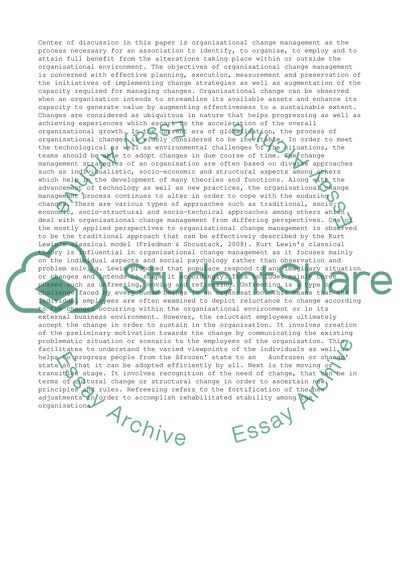Cite this document
(“Organisational change and development Essay Example | Topics and Well Written Essays - 3000 words”, n.d.)
Retrieved from https://studentshare.org/management/1394177-organisational-change-and-development
Retrieved from https://studentshare.org/management/1394177-organisational-change-and-development
(Organisational Change and Development Essay Example | Topics and Well Written Essays - 3000 Words)
https://studentshare.org/management/1394177-organisational-change-and-development.
https://studentshare.org/management/1394177-organisational-change-and-development.
“Organisational Change and Development Essay Example | Topics and Well Written Essays - 3000 Words”, n.d. https://studentshare.org/management/1394177-organisational-change-and-development.


